Under the heading “HUMAN >< NATURE”, Nuit Blanche explores humanity’s impact on the planet and seeks to encourage us to live sustainably through installations and performances. Like L’eau qui dort by the British artist Michael Pinsky, who will cast night-time spotlights on the junk that he has fished out of the Canal.
In Michael Pinsky’s installation, bicycles look like ghostly museum pieces
When we contacted Michael Pinsky via WhatsApp, he was in the garden of the United Nations headquarters in New York. A climate summit would soon be starting there, and his Pollution Pods were being installed. It is thanks to an invitation from the World Health Organization that these five transparent geodesic domes made their way into the nerve centre of power, after touring around the world for the past two years. Pinsky sounds happy that the immersive installation that recreates the air quality in five different locations on the planet is getting more traction. Two days after our conversation, Greta Thunberg would breathe in the polluted air of New Delhi, Beijing, São Paulo, and London and compare it to the clean air of the Norwegian island Tautra, adding fuel to her angry speech that has since gone viral globally. “As a child, I was a little Greta,” Pinsky says amused. “I just didn’t get the same publicity. Long before Chernobyl, in the late 1970s, I was already resisting nuclear energy. My installations were also inextricably linked to ecological concerns.”
I was a little Greta when nobody cared
Your Pollution Pods are a textbook example of how you seek to change the opinions and ultimately also the behaviour of the visitors of your installations.
Michael Pinsky: That’s right. For this project, I consulted with Norwegian environmental psychologists. We wanted to design an installation that has a direct impact on how people think about the environment and climate change. But that is only possible by speaking to their everyday realities. We don’t need to explain how real climate change is to anybody on the Maldives. They’ll be living underwater soon anyway. They are already feeling what Greta calls “the panic”.
Nobody is panicking here yet, so you have to bring panic in by the back door by involving things that people feel strongly about, like air pollution for example. Though it is not a cause of climate change, it does have severe consequences for public health, which is sacred and a major reason to call policymakers to account about their moral responsibilities. I am primarily referring to lower-level politicians, like our mayors, because upper-level politicians, like the Trumps of the world, are just so out of it that they are absolutely useless in terms of the climate change debate.
In the end, the only thing that will stop climate change is a cultural change. Art can help because it is able to question and even to change cultural assumptions – such as whether it is a good thing to keep consuming more and more or driving polluting cars – because in this particular case it is backed up by science.
Is the installation that you are bringing to the Canal Zone in Brussels also intended to confront society with its behaviour?
Pinsky: Yes. I first presented the installation in a residential neighbourhood near the docks in Somerset. There was no doubt that the objects we fished out of the water had been thrown in by locals. Some people were incensed. In a city like Brussels, that link is less explicit and my main point is to emphasize the general principle that is at the root of our throw-away society, namely that our system of refuse disposal is not adapted to our system of consumption, despite the fact that the two are inextricably linked. In the countryside, people stack their rubbish in cupboards or sheds, but if you live in a small apartment in the city, that’s impossible. The more you buy, the more you have to throw away. The old couches you see dumped on the street are a consequence of that. I don’t think we realize that enough.
Which objects are ideal for L’eau qui dort?
Pinsky: Bicycles, shopping trollies, bathtubs…basically any big objects with a certain shape so that you can see their reflection on the water when there is a spotlight on them at night. It makes them look like ghostly museum pieces. Objects made of metal or stainless steel are perfect for the soundtrack, which we made with the found objects. We didn’t only want to show people what they were throwing away, but also to make them hear it. The interplay of light and sound makes the objects come to life.
> Michael Pinsky: L’eau qui dort. > 6.00, Kanaal/Canal, Havenlaan 2 avenue du Port
Read more about: Events & Festivals
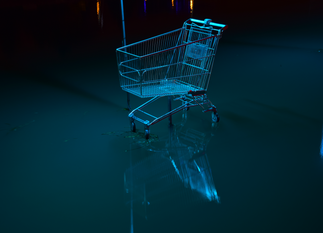
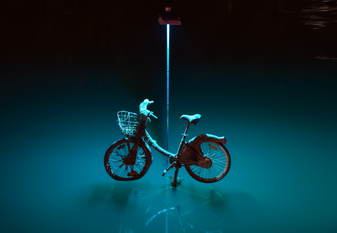
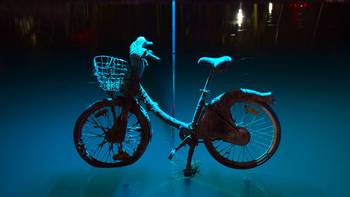
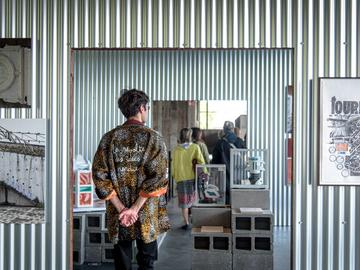
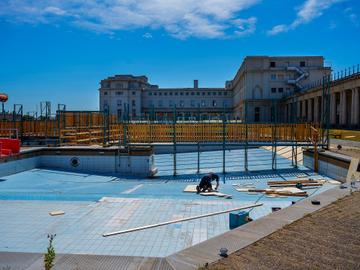
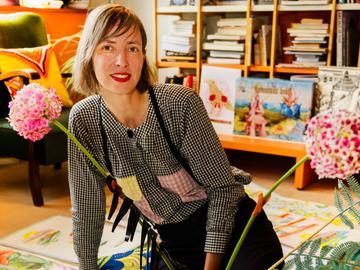
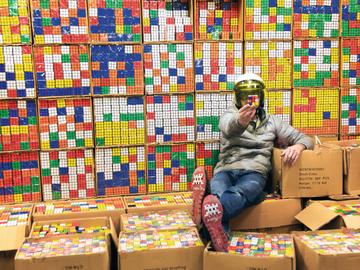
Fijn dat je wil reageren. Wie reageert, gaat akkoord met onze huisregels. Hoe reageren via Disqus? Een woordje uitleg.